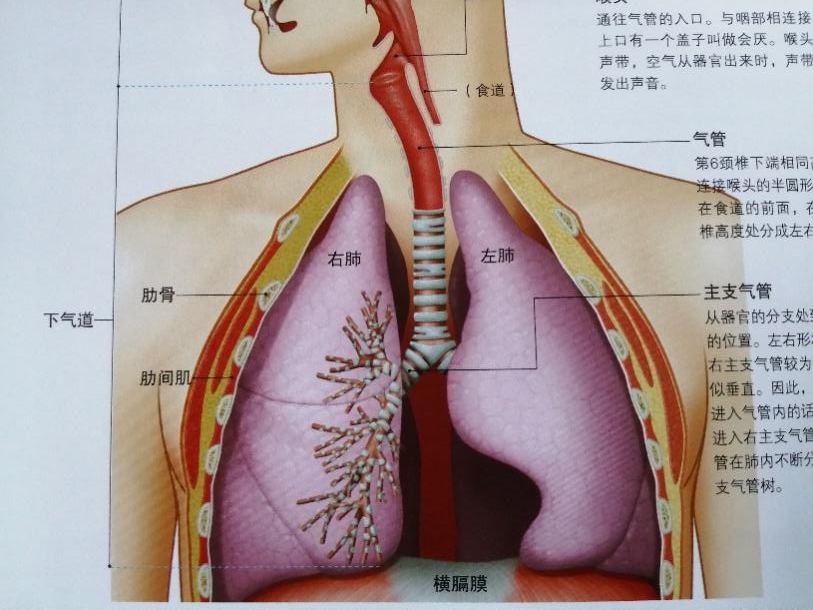
当前课程知识点:Culture and Tourism(International Edition) > Week 4: Cultural Landscapes: Meanings, Values, Assessment, Documentation > 4.4 Case Study: Wingecarribee Historic Landscape > 4.4.1 Case study:Wingecarribee historic landscape study(1)
返回《Culture and Tourism(International Edition)》慕课在线视频课程列表
返回《Culture and Tourism(International Edition)》慕课在线视频列表
现在 我们将以一个案例研究结束本讲演
这个案例是我多年前和同事们一起参与的
案例地有一个奇怪的澳大利亚名字Wingecarribee
这是以前居住在这个地区的土著人的名字
这个区域是澳大利亚的地理区域
在我居住的悉尼和堪培拉之间
这个距离大约是300公里
所以 该研究区域在悉尼和堪培拉之间
这是使用我概述的方法的一个示例
这是一个应用于实际案例的过程
其中研究涉及档案和现场调查
说到Wingecarribee 先看下其背景
Wingecarribee 其范围约为2700平方公里
正如我所说
这是我们所说的新南威尔士州的平原地区的一部分
介于悉尼和堪培拉之间
郡或这个地区 我们称为澳大利亚的郡
拥有大量的文物和古迹价值
在当地 区域和全国范围内都很重要
因此 该地区是一个主要的旅游目的地
由于来自悉尼的超速发展
发展压力也不断增加
人们来到这里居住 然后通勤到悉尼
即使在火车上一个小时或更长时间
人们一直担心 随着时间的推移而失去这种乡村特色
这是一种开阔的牧草景观
周围环绕着桉树林或林地 树木茂密
当欧洲人到达时
他们开始在树木不茂密的地区定居
他们确实移除了一些树木
或者您看到的是这些区域
上面散落着高大的树木
下面长着高高的草丛
那是几千年的燃烧造成的原始文化景观
这是一张照片 这片土地是由这个人定居的
在此视图上有一块牌匾 以纪念该人
您正在做这样的研究吗
如果您站在这旁边 可以用眼睛
可以调动你已知的背景
或者您可能认为这只是一堆石头 但事实并非如此
就在这条路的边上
这是一条由罪犯劳工建造的道路
这些罪犯是在19世纪初从英国转移到澳大利亚
他们被迫投身于土地 修路和其他事情上
因为这边是一边是陡峭的土地 一边是水
或者这是公共区域的历史之一
当地人重视这种事情
是他们历史的一部分
您经常会带动工程师 并将其转变为具体类型
当地人在进行这项研究时说的一件事
就是希望这些文化得到保存
因此 由于日益增长的人口压力和游客
这里在春 夏 秋三季都非常受游客欢迎
为了确保历史性 夏尔郡没有被侵蚀
早在1994年 郡议会就获得了遗产研究的资金
我是一个研究小组的一员
负责为实践和现实决策提供信息
未来这一领域的重要组成部分是什么
该研究的主要目标包括识别和分析该郡的环境遗产
并为保护和管理其遗产资源提供实用的记录建议
整个研究的主要内容是参与历史文化景观评估
它涉及景观历史学家 景观建筑师和考古学家
我们曾经看到过这样的风景
绵延800多平方公里 40乘20
这是一个很大的区域 以进行研究
那我们做了什么
我们看一下文档 然后实地去看看现场
对我来说 这永远是最好的部分
你出去那里 你开始寻找
您认为 这里有些东西
我需要对此进行研究
然后拍摄照片 请确保记录所有照片的位置
因此 除了是最早定居悉尼的地区之一以外
人们在1820年左右来到这里
这里有历史悠久的宅基地 称为罗斯比公园
就坐落在这种景观的中间
还有其他具有重要历史意义的植树历史遗产
这是一条通往19世纪20年代的车道
这些英国榆树是二百三十年前种在这里的
这里有一些小城镇和居民点
就像这里的一个地方
所以我们得到的是一个40公里长
大约20公里宽的研究区域
占据了这个起伏的丘陵和山谷地形
在海拔650到850米的高度
被Wingecarribee河一分为二
起伏的地形被许多标志性的山丘
及其历史悠久的城镇和村庄所点缀
正如我所说 该地区几乎还以其历史悠久的花园而闻名
到了春天 人们蜂拥而至
去看看这些历史悠久的花园
这个地方被人群淹没了
虽然不及中国的拥挤程度水平
但却变得拥挤不堪
正如我所说 中部农村地区被这些环绕的山脉包围
因此 这是我们基于另一个较长的大图使用的研究方法
我向您展示了该图
您查看了看文献证据
现场访问 然后看定居模式和定居主题
然后 我们将该区域划分为一系列文化景观单元
然后根据这些标准对每个单元进行评估
然后分析其解释性价值 关联价值 连续性和完整性
然后 我们定义关键的历史单位和城镇
然后提出保护和管理方针
我们没有使用我给你们展示的那个大图表中的所有标准
因为这是一个如此大的区域
单元相当大
可以查看整体景观格局 建筑群 流通路线和历史关联
流通路线特别重要
因为早期定居者是在已有数千年历史的
原住民根源之后探索该地区的
我展示了这些整体的景观格局
这是一个相当大规模的景观
我们称之为大围场
我们研究了历史资源
其中一幅是1836年我给你看的弗罗斯特公园宅地的画
它坐在风景里 山顶上有公园
画家在一座小山上眺望着这片风景
我们几乎找到了画家画这幅画的确切位置
然后回到工作室绘画
这是因为它变了一点
这谷仓或池塘当时不在那里
但是有牧羊人在照看他的羊和城堡
这一带现在还有牛羊和城堡
这幅画上有重点
有一部分 您可以在它前面看到
这是大片的草丛落下
现在应该是这样
就像欧洲人抵达时那样
由于原住民的燃烧
该地区经常有大片的草丛空地
普通人控制着景观
他们将拥有树木繁茂的区域和没有树木的区域
这样他们就可以猎杀袋鼠了
他们可以将袋鼠带出或进入这些空旷地区以狩猎它们
-1.1 Introduction course outline and UNESCO World Heritage Program
--1.1.1 Introduction of culture and tourism course outline
--1.1.2 Introduction of UNESCO World Heritage Program(1)
--1.1.3 Introduction of UNESCO World Heritage Program(2)
-1.2 Cultural Heritage-1
--1.2.1 The meaning of culture heritage
--1.2.2 Criterion(i): masterpiece of human creative genius
--1.2.3 Criterion(ii): exhibit important interchange of human value
--1.2.4 Criterion(iii): bear a unique or at least exceptional testimony
--How can the public understand the importance of heritage?
-1.3 Cultural Heritage-2
--1.3.1 Criterion(iv): an outstanding example in human history
--1.3.2 Criterion(v): represent a culture or human interaction with environment
--1.3.3 Criterion(vi): associated with living traditions of outstanding universal significance
-1.4 Natural Heritage
--1.4.1 Natural heritage features, formations and criterions
--1.4.2 Cases studies of natural heritage
--Cultural landscape meanings: The case of West Lake, Hangzhou, China
--Week1 quiz
--How to access heritage of your hometown?
-2.1 Mixed Culture and Natural Heritage
--2.1.1 Mixed heritage operational guidelines and cases (1)
--2.1.2 Mixed heritage operational guidelines and cases (2)
--2.1.3 Mixed heritage operational guidelines and cases(3)
-2.2 Authenticity, Integrity and Cultural Routes
--2.2.1 How to determine authenticity and integrity
--2.2.2 Heritage routes and heritage canals (1)
--2.2.3 Heritage routes and heritage canals (2)
--What do you think about cultural heritage categories?
-2.3 Special Heritage and Sustainable
--2.3.1 Physical remains of the history of technology and industry
--2.3.2 Transboundary Heritage, Serial Heritage, Serial/Transnational Heritage
--2.3.3 Intangible cultural heritage
--2.3.4 UNESCO World Heritage and Sustainable Tourism Programme
--Recovering the Memory of Ourselves for the Sustainable Cites
--Week 2 quiz
--What do you think about cultural heritage categories?
-3.1 The Australia’s Heritage System and Sydney Opera House
--3.1.1 The Australian Heritage System
--3.1.2 Case Study: The Sydney Opera House
-3.2 Role of the ISCCL and Cultural Landscape (1)
--3.2.2 Uluru-Kata Tjuta National Park
--3.2.3 Honghe Hani Rice Terraces
-3.3 Role of the ISCCL and Cultural Landscape (2)
--3.3.1 West Lake cultural landscape (1)
--3.3.2 West Lake cultural landscape (2)
-3.4 Rural Landscapes as Heritage
--3.4.1 ISCCL Principles Concerning Rural Landscapes as Heritage
-3.5 Case Study: Mongolian Altai
--3.5.1 Nature Culture Integration & the Mongolian Altai(1)
--3.5.2 Nature Culture Integration & the Mongolian Altai(2)
--Week 3 quiz
--Discussion: What do you think is the role of ISCCL?
-4.1 Introduction of the Meaning of 'landscape’
--4.1.1 Brief introduction of landscape and culture
--4.1.2 The conceptual framework of cultural landscape
-4.2 Landscape Values
--4.2.1 The word “landscape” itself and differences in Western, Eastern
--4.2.2 Cultural significance for heritage source
--Discussion: What do you think the cultural landscape attracts you?
-4.3 Reading the Landscape: Identification and Assessment
--4.3.1 Planning model for heritage conservation management policy
--4.3.2 Cultural landscape resources evaluation steps
--Article: Cultural mapping: Intangible values and engaging with communities with some reference to As
-4.4 Case Study: Wingecarribee Historic Landscape
--4.4.1 Case study:Wingecarribee historic landscape study(1)
--4.4.2 Case study:Wingecarribee historic landscape study(2)
--Week 4 quiz
--Discussion: What should we do to strengthen the protection of cultural landscape?
-5.1 Indigenous Tourism
--5.1.1 Indigenous tourism background
--5.1.2 World heritage and indigenous peoples
--5.1.3 Tourism issues at Canadian indigenous world heritage sites
--Discussion: What challenges indigenous World Heritage faces?
--Article: State conceptions of indigenous tourism in Chile
-5.2 Case Study and Conclusion: Great Expectations for Tourism
--5.2.1 Case study Pimachiowin Aki
--5.2.2 Conclusions:Great Expectations for Tourism
--Disussion: Do you have any experience of indigenous tourism?
--Week 5 quiz
-6.1 The Definition of Heritage in Heritage Performance Study
--6.1.1 The definition of heritage in heritage performance study
--6.1.2 Heritage performance and meaning making
--6.1.3 Two key issues emerging from qualitative study
-6.2 Heritage Performance - Evidence from Australia, England and USA
--6.2.1 Heritage performance - reinforcement
--6.2.2 Heritage Performance - inter-generational communication and social values
--6.2.3 Heritage performance - recognition and respect
--6.2.4 Heritage performance - education
--Article:Theorizing museum and heritage visiting
-6.3 The Conclusion of Heritage Performance
--6.3 The conclusion of heritage performance
--Week 6 quiz
--Discussion: What kinds of heritage performances have you learned in this week?
--Final test

